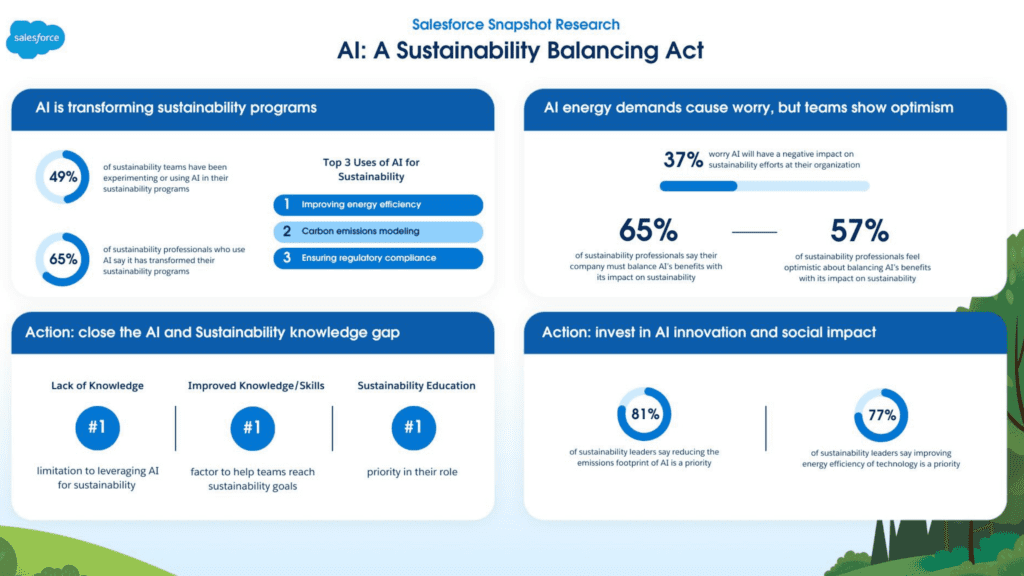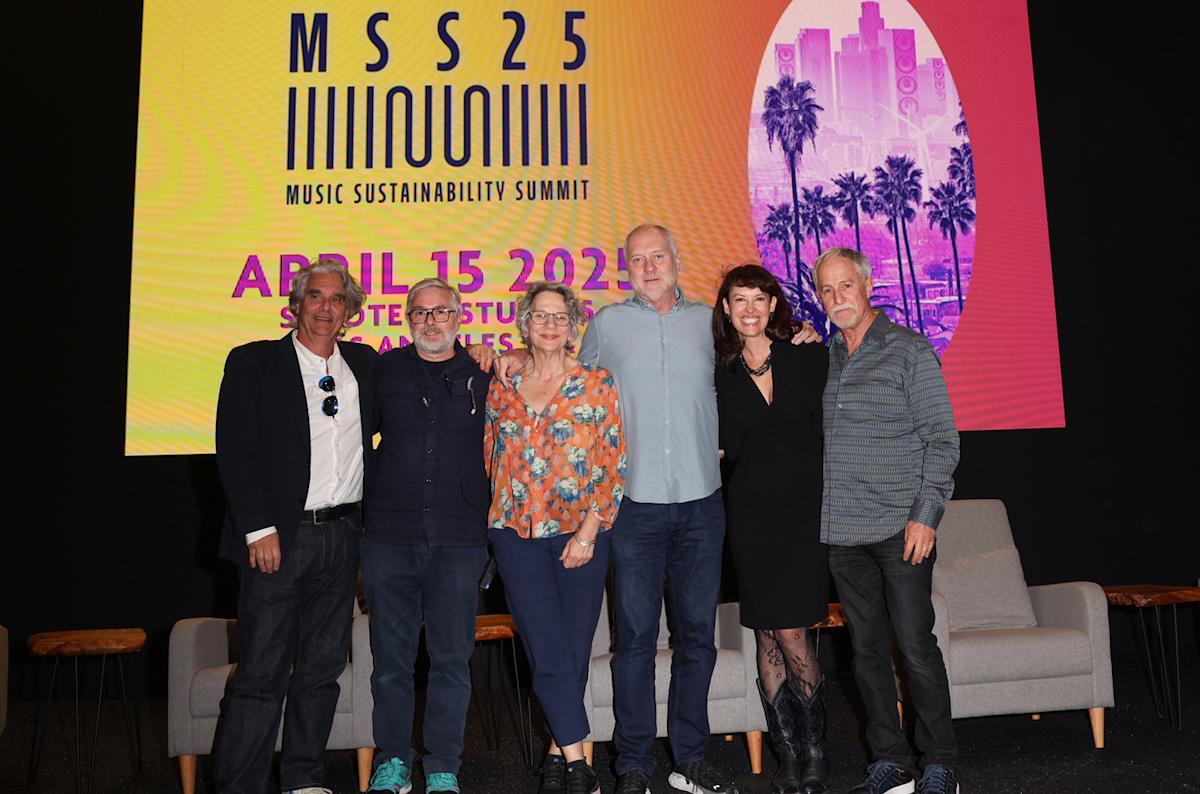Key Impact Points:
- 57% of sustainability professionals are optimistic about balancing AI’s environmental impact with its benefits.
- AI is transforming sustainability programs, with 65% of professionals noting significant positive changes.
- The biggest barrier to using AI for sustainability is a knowledge gap, with 79% prioritizing education and training.
A recent survey of nearly 500 sustainability professionals highlights a growing concern about AI’s potential negative impact on sustainability efforts. Despite these concerns, 57% of respondents believe they can balance AI’s environmental challenges with its benefits. Salesforce‘s research sheds light on how companies are navigating this balancing act to integrate AI into their sustainability strategies effectively.
Background
AI-driven data center power usage could double by 2026, posing a risk to corporate carbon reduction efforts. Sustainability teams worldwide face the challenge of integrating AI without compromising environmental goals. However, AI also offers opportunities to enhance supply chain management, ESG reporting, and other sustainability initiatives.
Current Developments
Salesforce’s research reveals key findings from sustainability professionals about AI’s role in their programs:
- Balancing AI’s Benefits and Costs:
Over 6 in 10 professionals acknowledge the need to balance AI’s advantages with its environmental costs. While nearly 4 in 10 worry about AI’s negative impact, 58% believe its benefits will outweigh the risks in addressing climate challenges. Additionally, 55% feel that AI will have a net positive impact on global sustainability progress. - AI Transforming Sustainability Programs:
AI is beginning to reshape sustainability efforts, with nearly half of the professionals surveyed using or experimenting with AI in their initiatives. Specifically, 20% have fully implemented AI, and 29% are still experimenting. Among those using AI, 65% report significant improvements in their sustainability programs. - Top Uses of AI in Sustainability:
The primary applications of AI in sustainability include: - Improving Energy Efficiency (50%): Monitoring energy consumption, predicting high usage periods, and optimizing energy distribution.
- Carbon Emissions Modeling (48%): Identifying the most impactful stages of a product’s lifecycle.
- Ensuring Compliance with Environmental Standards (47%): Meeting ISO standards and emissions reduction regulations.
- Knowledge Gap in AI and Sustainability:
The most significant limitation to leveraging AI for sustainability is a lack of knowledge. Nearly 79% of sustainability professionals prioritize educating others on sustainable practices, with 42% marking it as a high priority. Improving knowledge and skills (52%) and providing training (45%) are crucial to achieving sustainability goals.
Change the World - Subscribe Now
“Sustainability and AI education and training not only narrows the gap between businesses and their climate goals, but also helps create a culture of learning and innovation.” – Suzanne DiBianca, EVP and Chief Impact Officer, Salesforce

Impact and Implications
- Investing in Education and Training:
Implementing education and training programs can help businesses bridge the knowledge gap, enabling them to reach their sustainability goals more effectively. - Driving Innovation and Social Impact:
Companies can reduce AI’s environmental impact by investing in innovative solutions and supporting policy advocacy and philanthropic initiatives. “Investing in innovation and the social impact of AI is crucial for reducing the carbon footprint of AI tools and ensuring the technology benefits everyone equitably,” said Boris Gamazaychikov, Senior Manager of Emissions Reduction, Salesforce. - Operationalizing Sustainability:
Businesses can integrate sustainability across their operations, allocating resources as they would for any other business segment, to ensure long-term success.
Conclusion
Salesforce’s research highlights the delicate balance between leveraging AI for business benefits and minimizing its environmental impact. With strategic education, innovation, and investment, companies can harness AI’s potential while advancing their sustainability goals.
Call to Action
Companies are encouraged to prioritize education and training programs to equip their teams with the necessary knowledge and skills to integrate AI into sustainability initiatives effectively. By focusing on innovation and social impact, businesses can ensure that AI’s benefits extend to all stakeholders, including the planet.
Related Article: Wall Street Shifts from ESG to Sustainability Amid Political Backlash












